Gold is Coiling for a Sharp Move
Key continuation patterns known as pennants are forming in both the U.S. Dollar Index and gold, and the direction of their breakouts will signal the next major move for each.

After a volatile couple of months filled with relentless news and confusing cross-currents from the Trump administration’s tariff plans and other policies, the financial markets have calmed down in recent weeks—providing a much-needed breather for everyone, myself included. While it’s been quiet in the precious metals space, numerous indicators are flashing that this is merely the calm before the storm. As I’ll show in this update, another sharp move is likely right around the corner.
The foundation of my thesis is the U.S. Dollar Index — a measure of the dollar’s exchange rate against a basket of major world currencies (not its domestic purchasing power). As I’ve been highlighting in recent weeks (learn more), the Dollar Index is now at a critical juncture, hovering just below the key 100 level, which has served as major support and resistance for several years. Historically, rebounds off the 100 level have triggered sharp selloffs in commodities like gold and silver, due to the well-established inverse relationship between the dollar and commodity prices.
What’s especially noteworthy is that the Dollar Index recently broke below the key 100 level—a significant development that raises the likelihood of a dollar bear market (and a commodities bull market). Also worth noting is that although the dollar didn’t plunge immediately after the breakdown, it began consolidating in a pennant pattern—a technical formation that typically signals a sharp move ahead once a breakout occurs. The odds favor a downside move, as pennants are typically continuation patterns, especially with the significant 100 resistance level now looming just overhead.
My base-case scenario is that the dollar breaks down from this pattern, extending its decline. That said, I’m waiting for confirmation before making any bold calls and remain flexible to all possible outcomes.
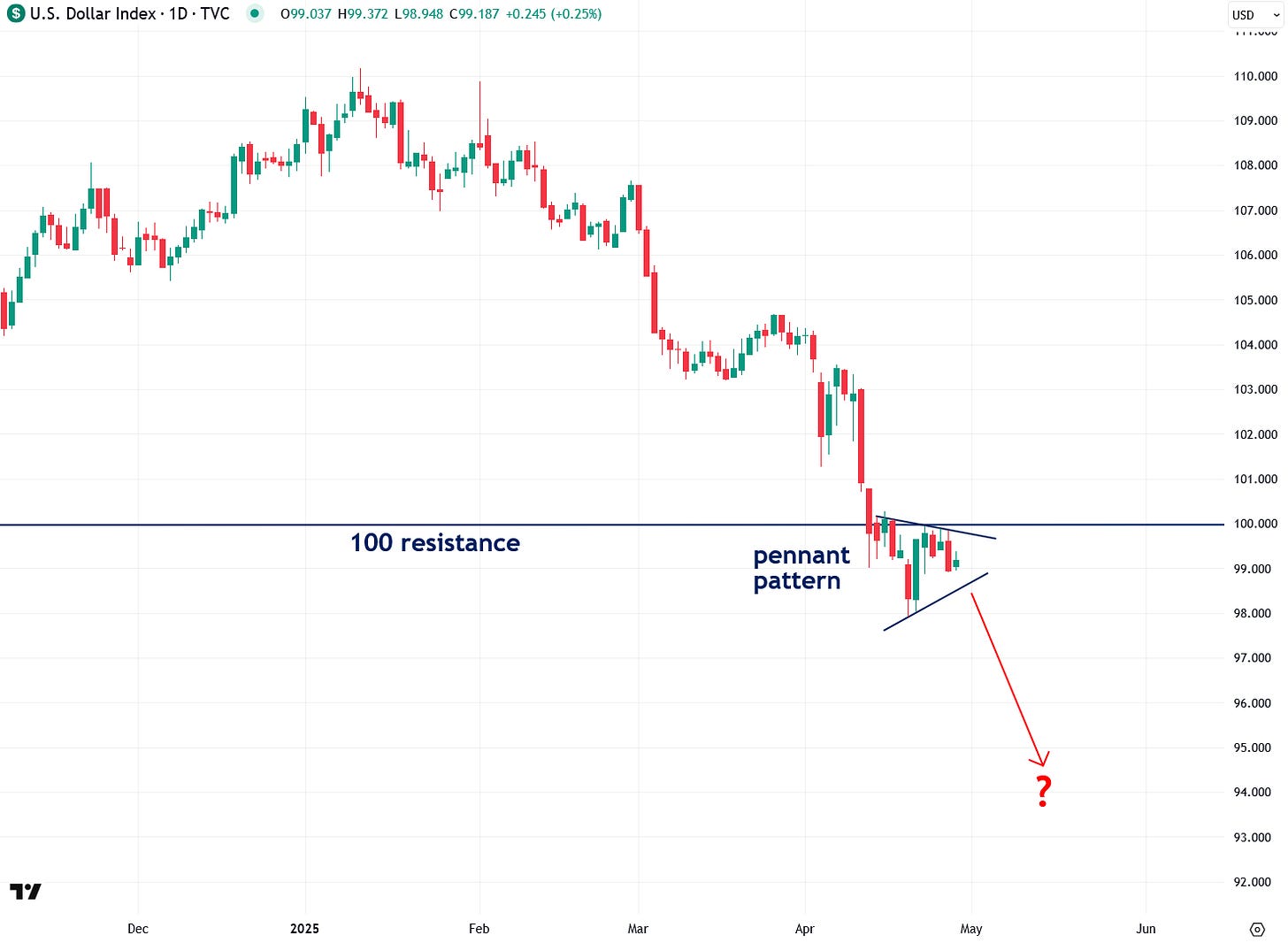
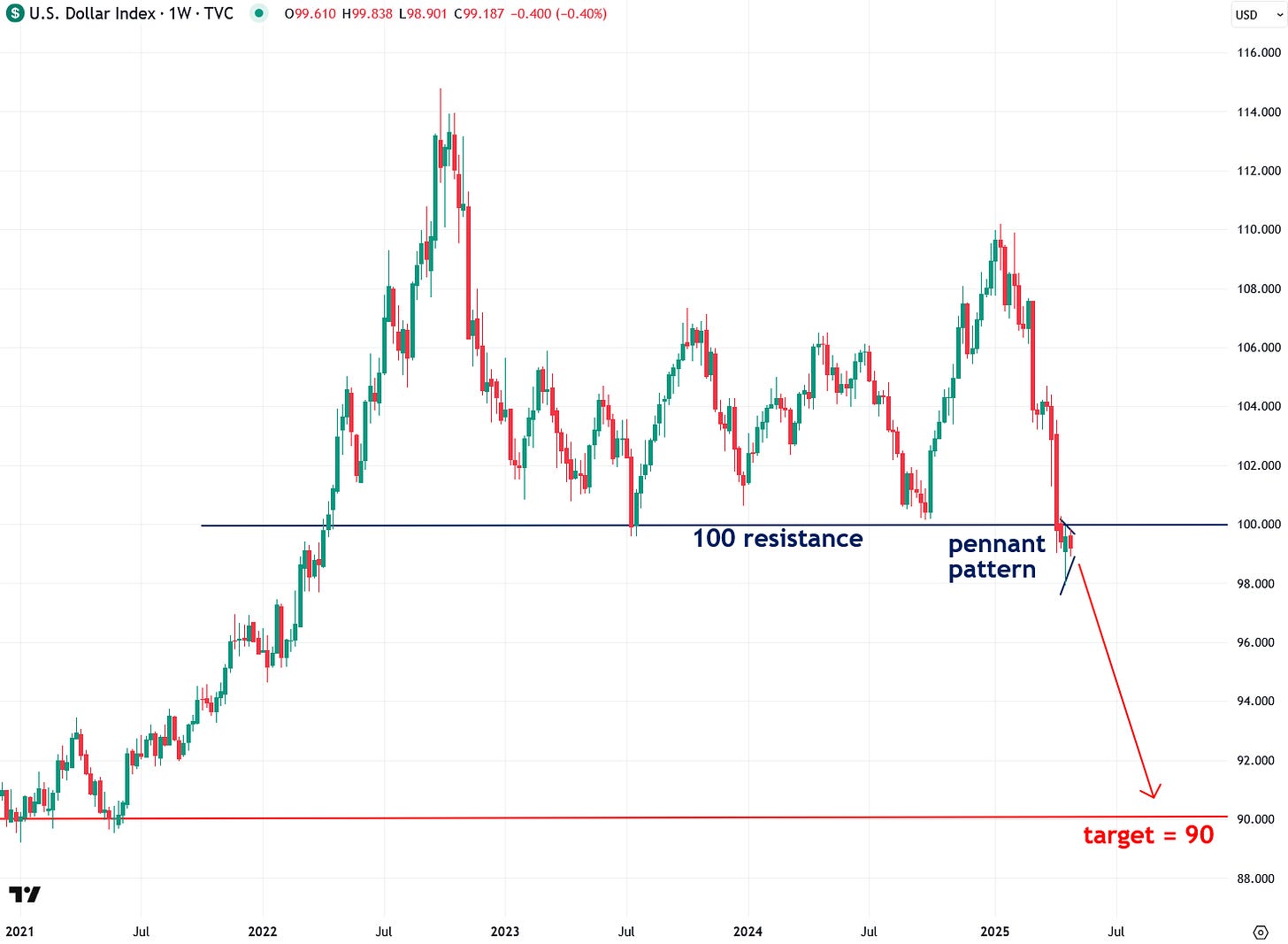
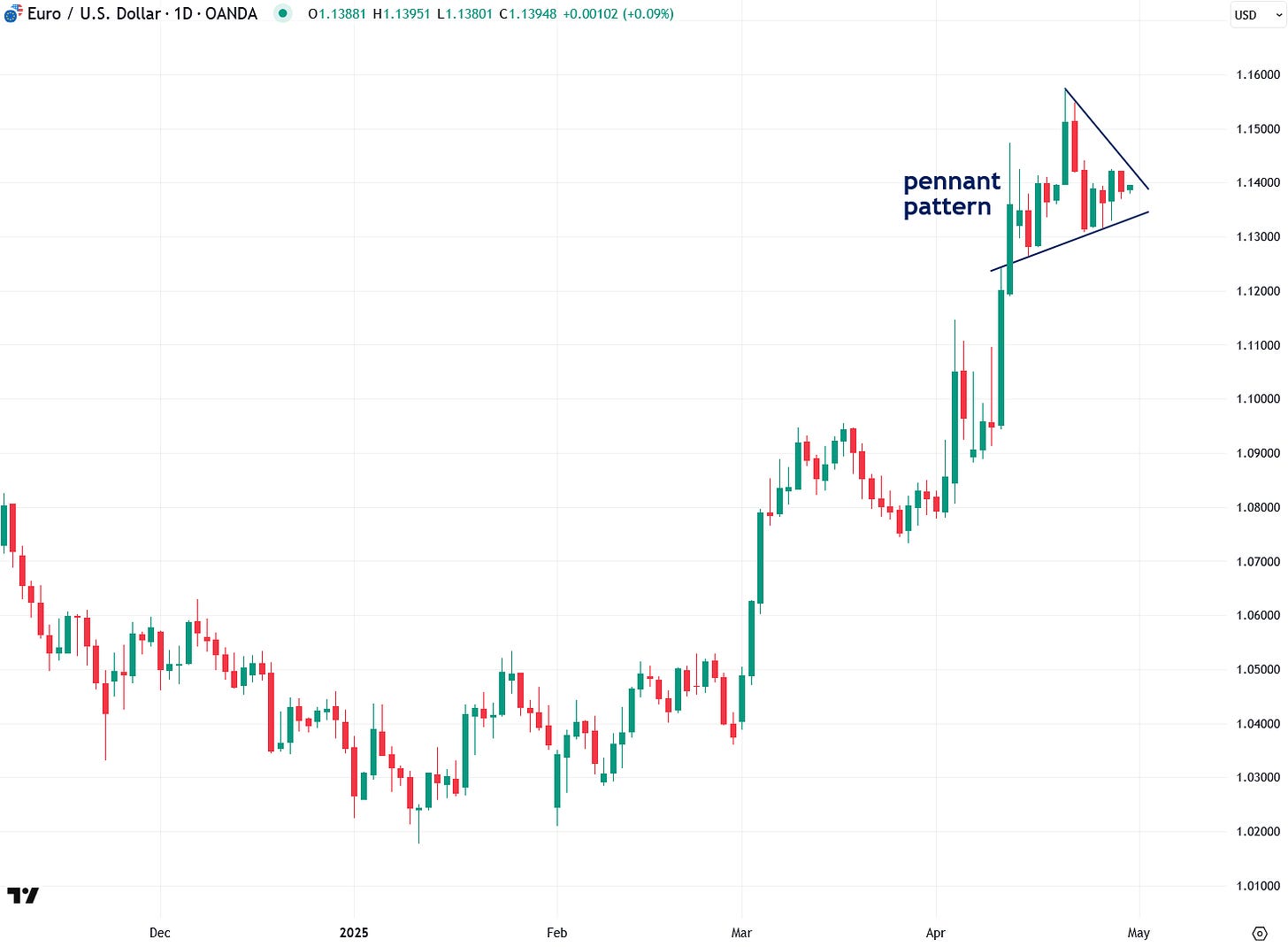
This development is especially noteworthy given the euro’s historical correlation with commodities. During the early 2000s, for example, the euro’s bull run coincided with a powerful commodities boom and a prolonged dollar bear market. History may be starting to rhyme again.
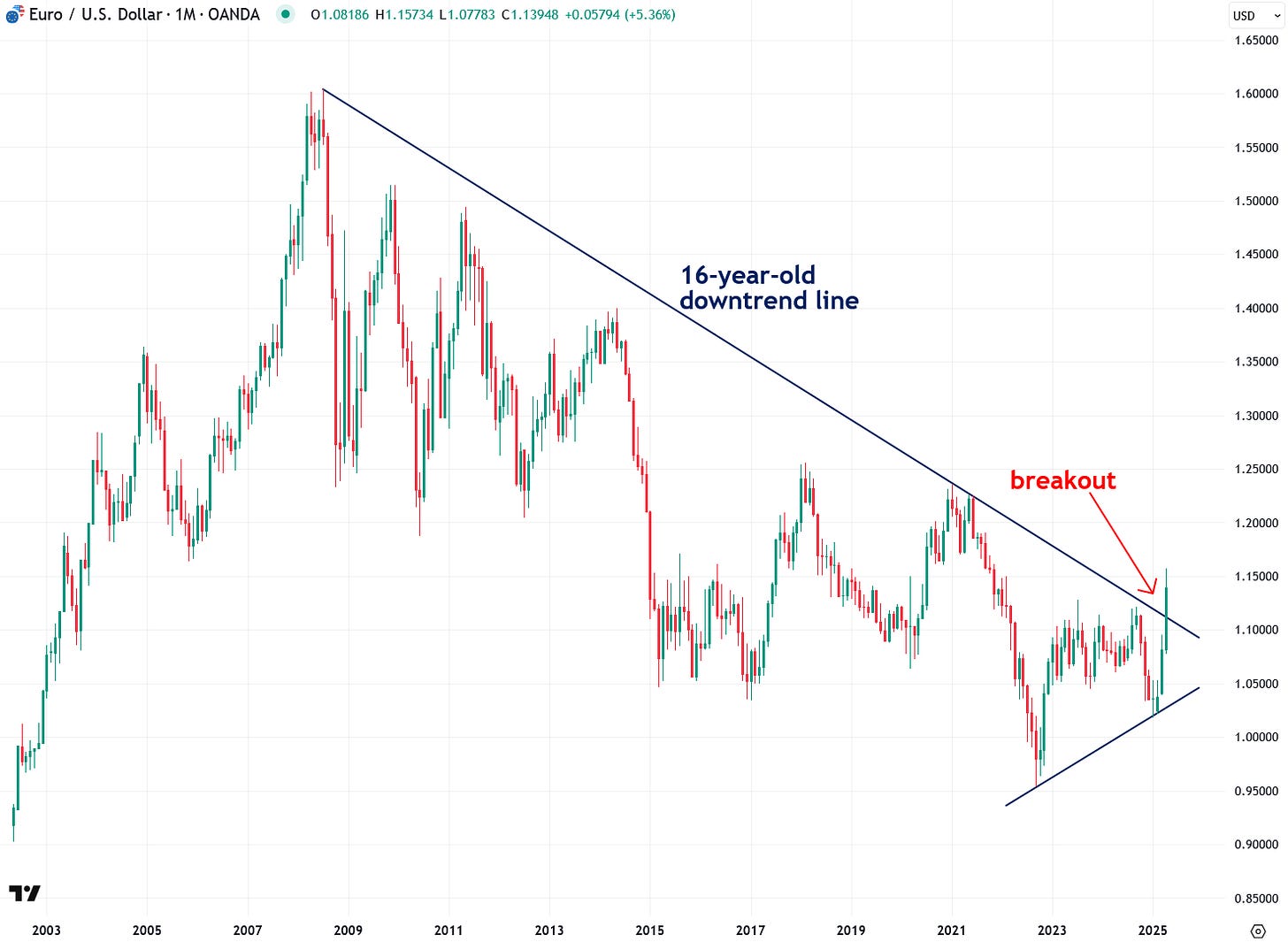
Since gold and the euro tend to move together and both trade inversely to the dollar, the direction of these breakouts will be a key signal for what lies ahead. As mentioned earlier, pennants are typically continuation patterns, which suggests a higher probability of gold breaking to the upside—but it’s crucial to stay flexible and wait for confirmation rather than acting prematurely.
Last week, I published a piece explaining that gold had become technically overbought in the short term—a reason for some caution. However, it’s important to remember that the most explosive bullish moves often occur when an asset is already overbought and has strong momentum behind it. If gold can confirm its strength by breaking out of its pennant to the upside, I wouldn’t be surprised to see it surge toward $4,000 fairly quickly, based on established pennant pattern measurement techniques.
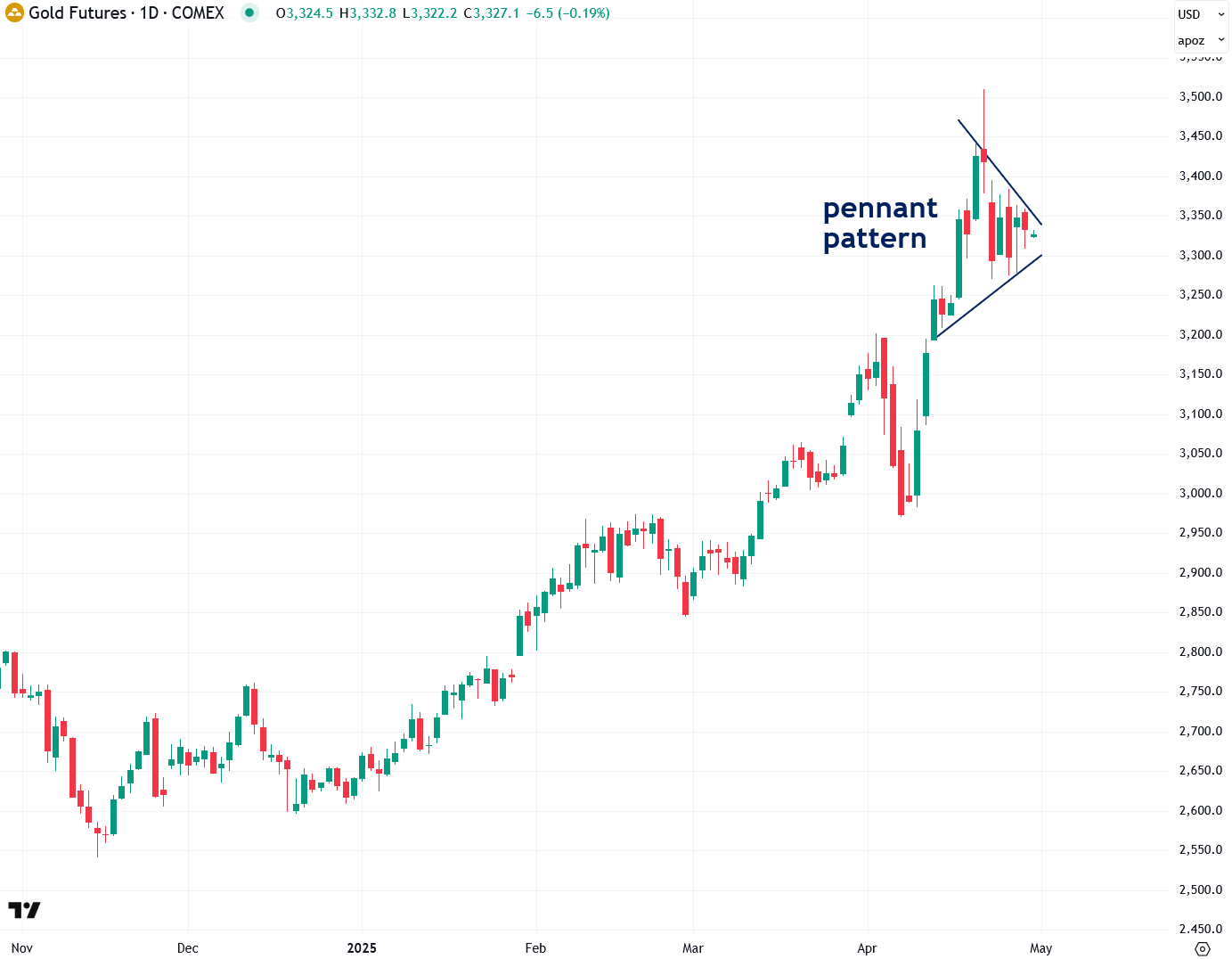
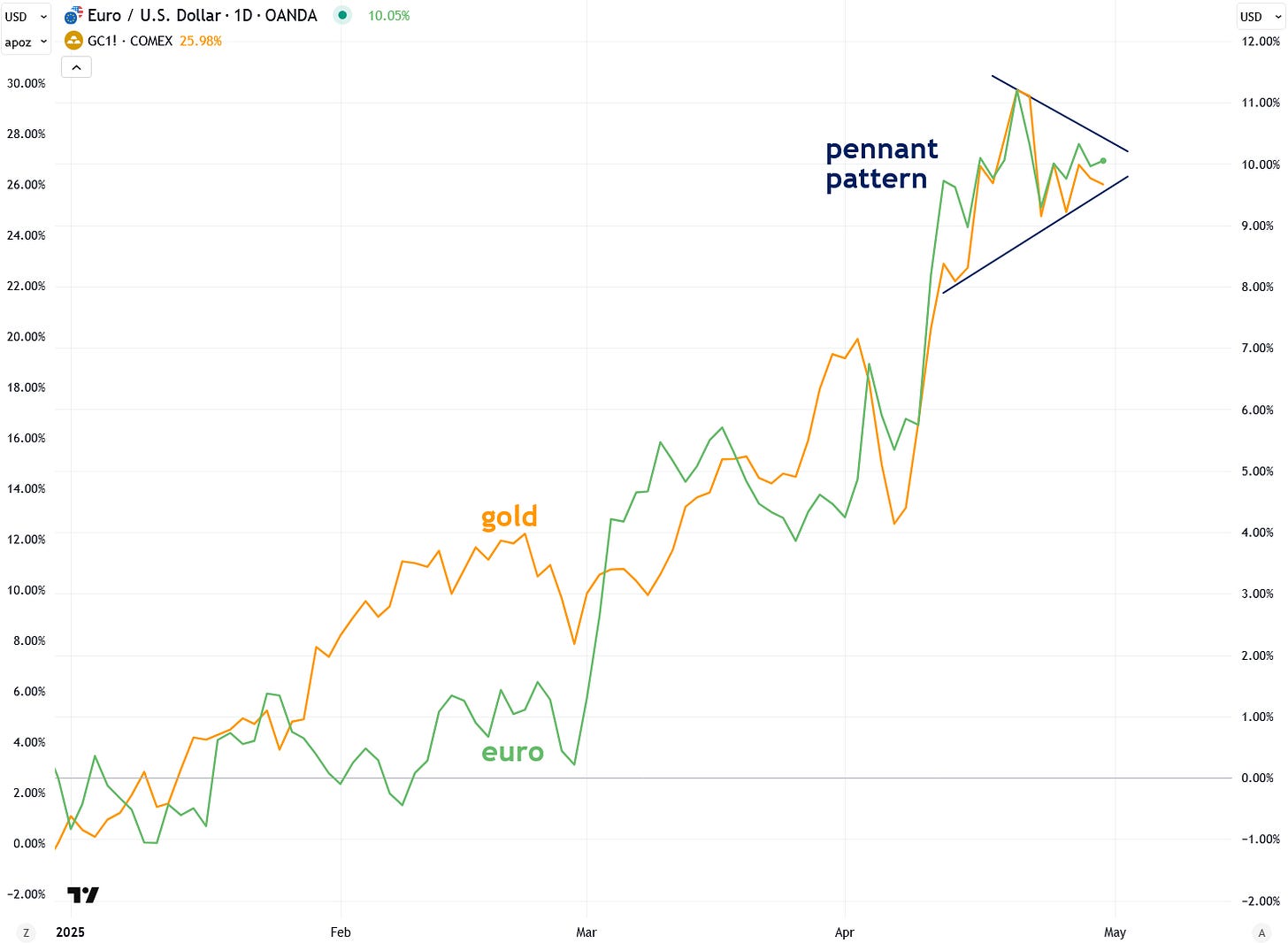
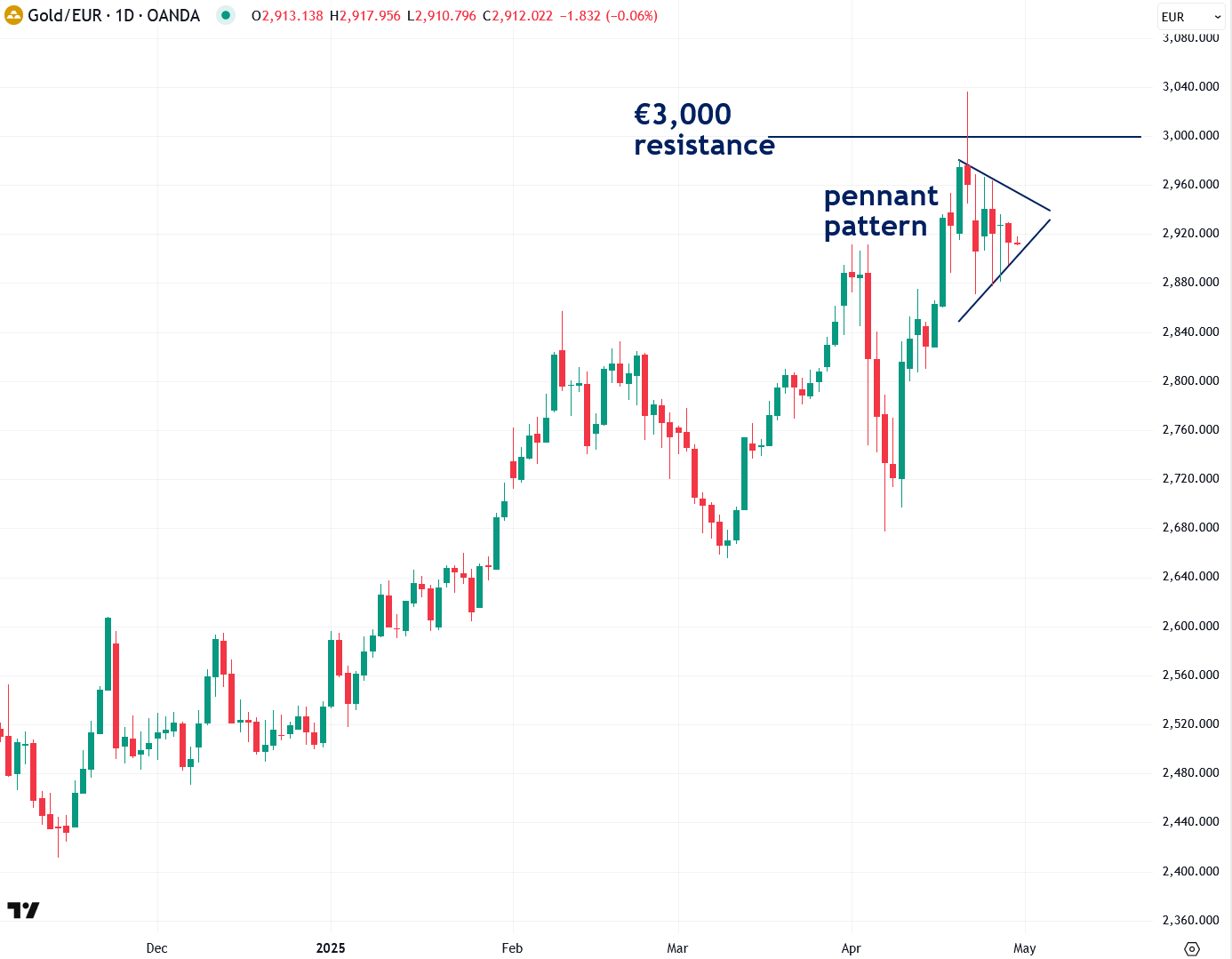

The WCU is a composite global currency unit based on the GDP-weighted average of the top 20 world economies. In many ways, it helps provide the most balanced and accurate measure of gold’s true global performance—which is why I’ve been watching it closely.
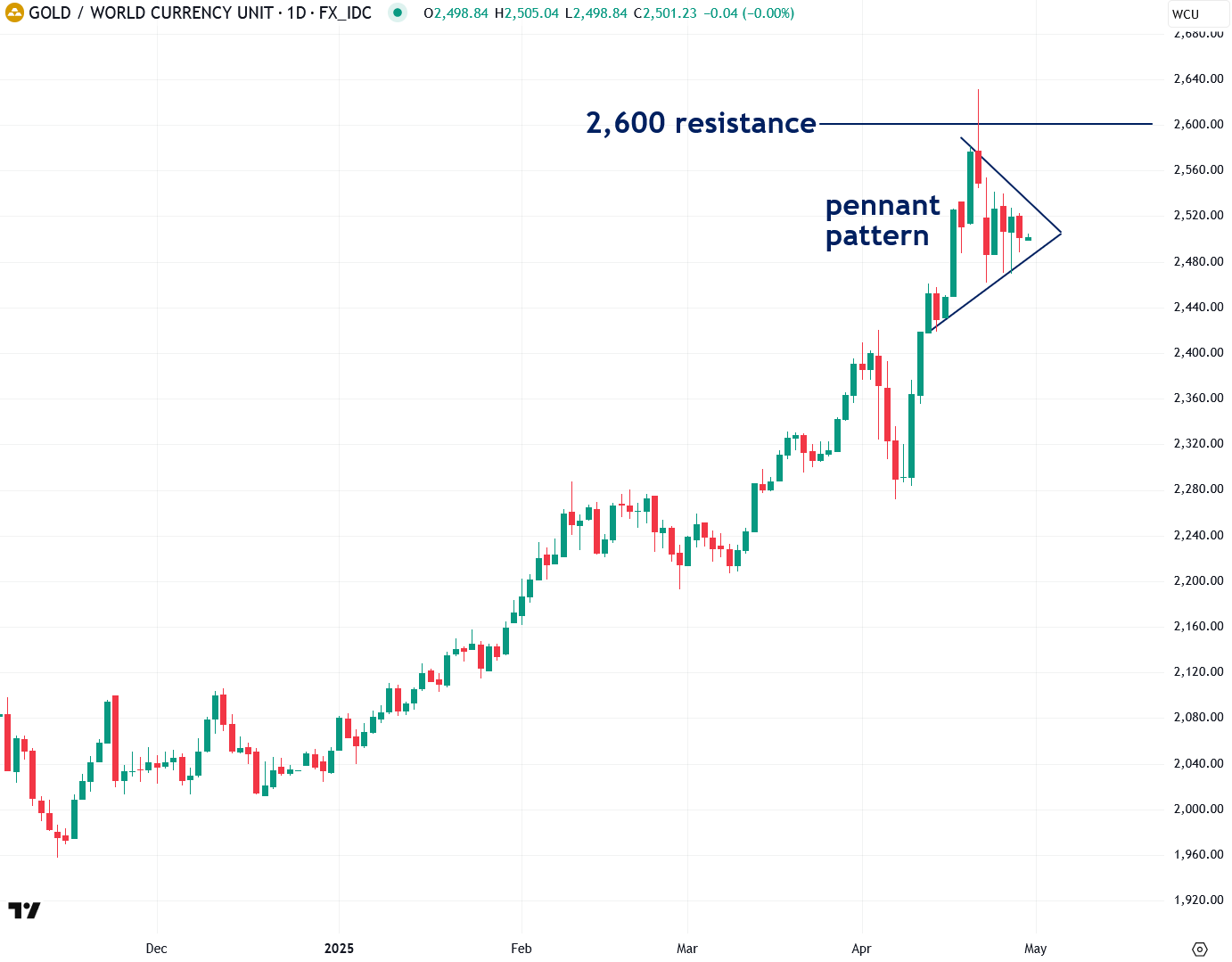
Sure enough, gold priced in Canadian dollars is also forming a clear pennant pattern:
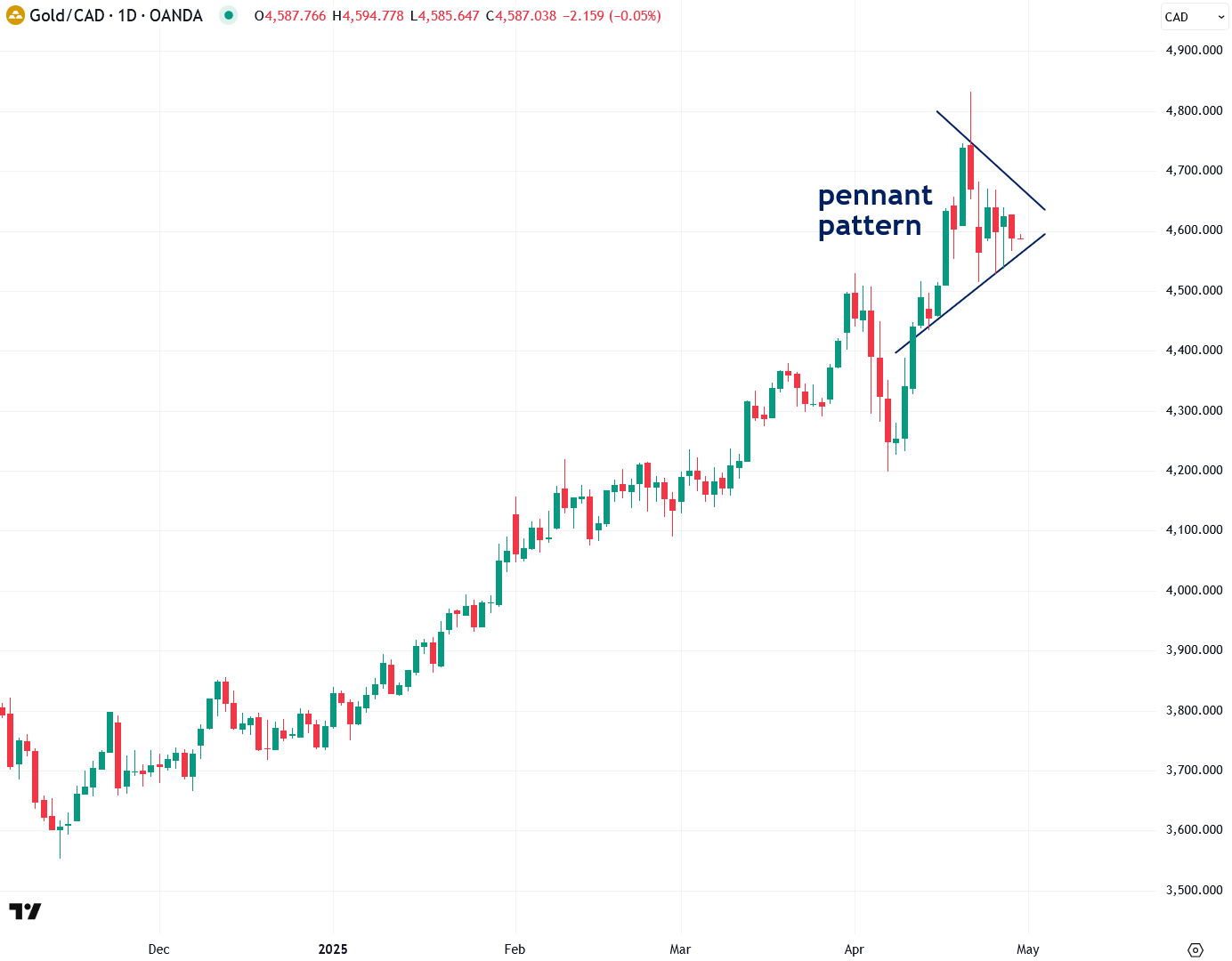
Interestingly, gold priced in Australian dollars is also forming a distinct pennant pattern:
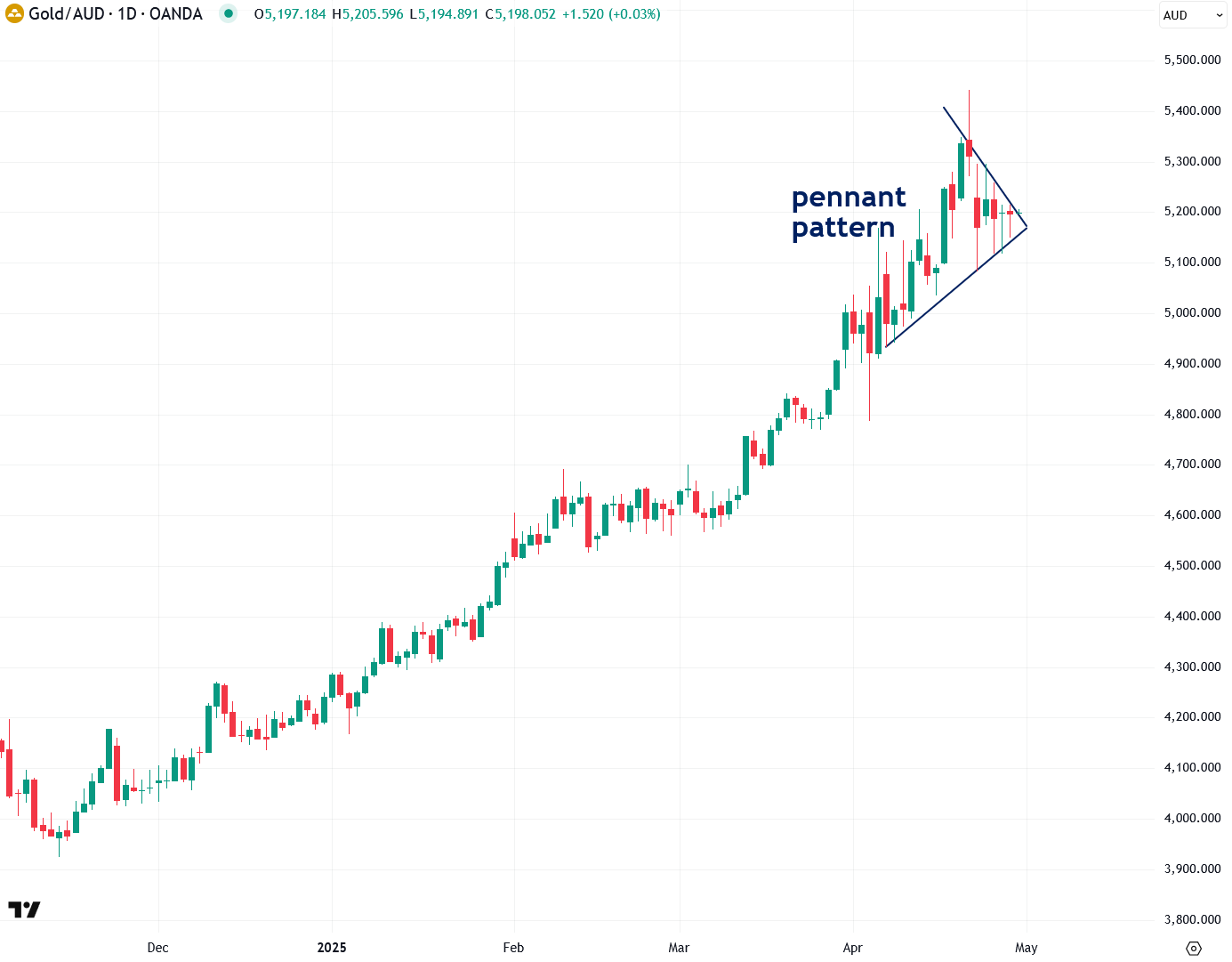
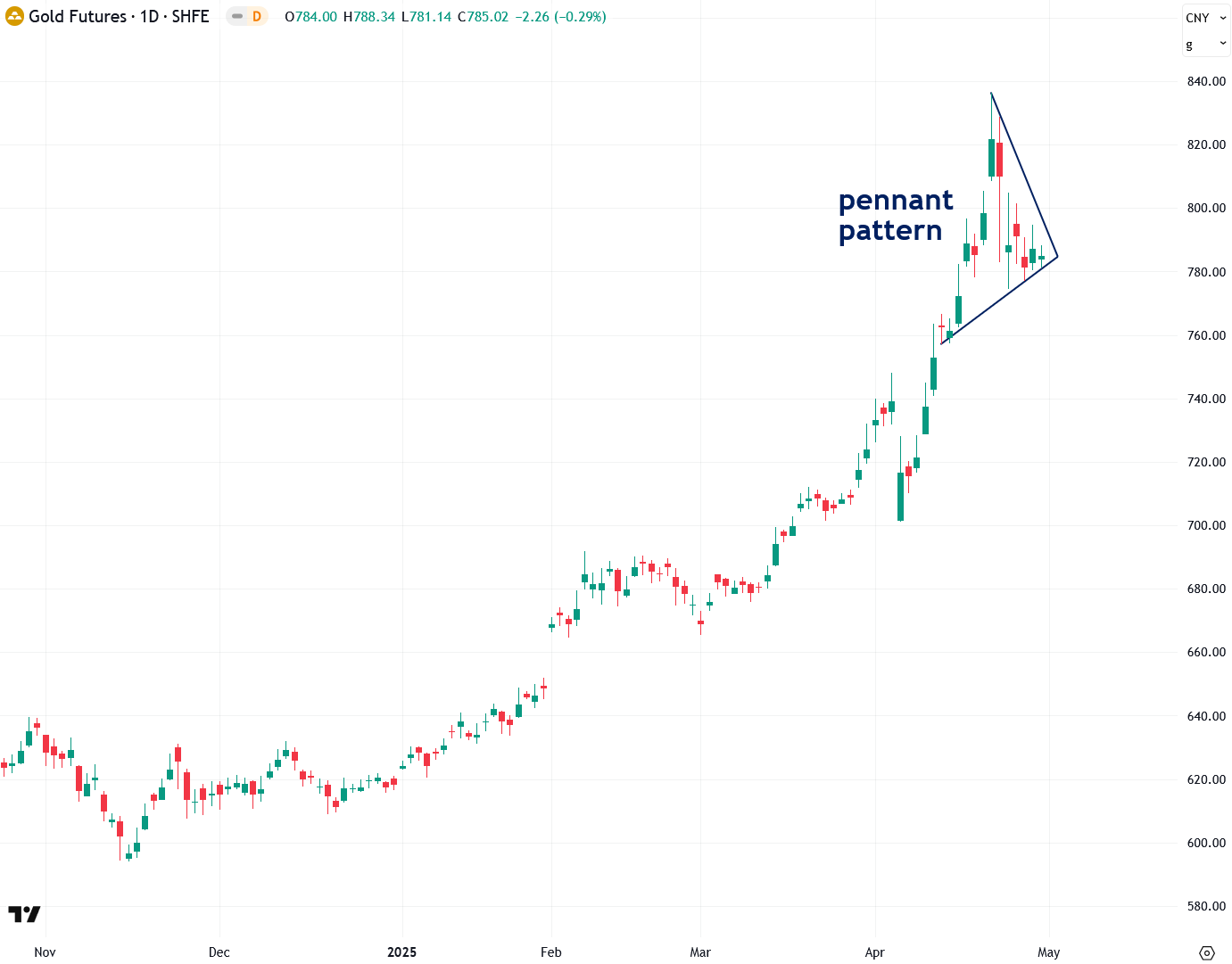
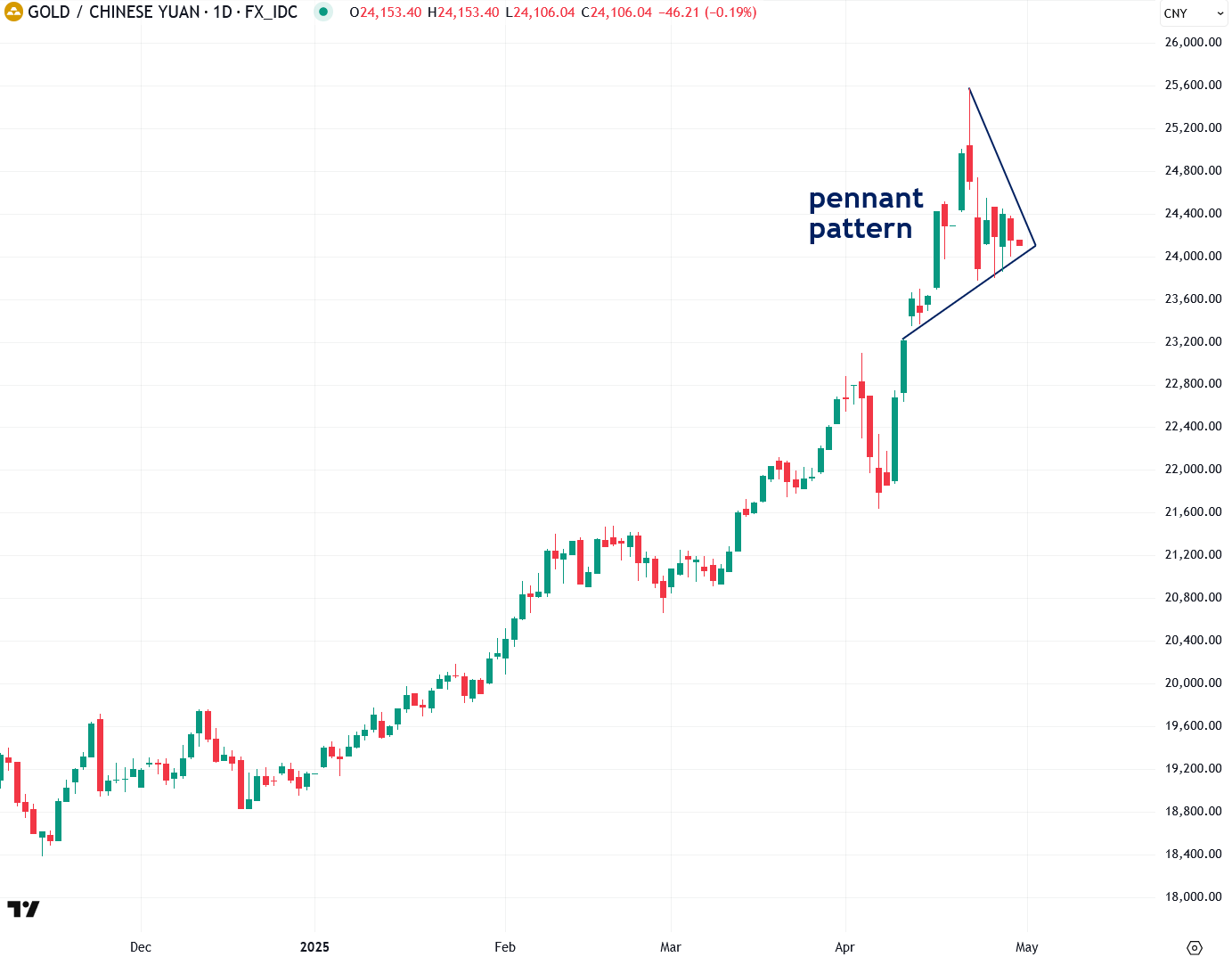

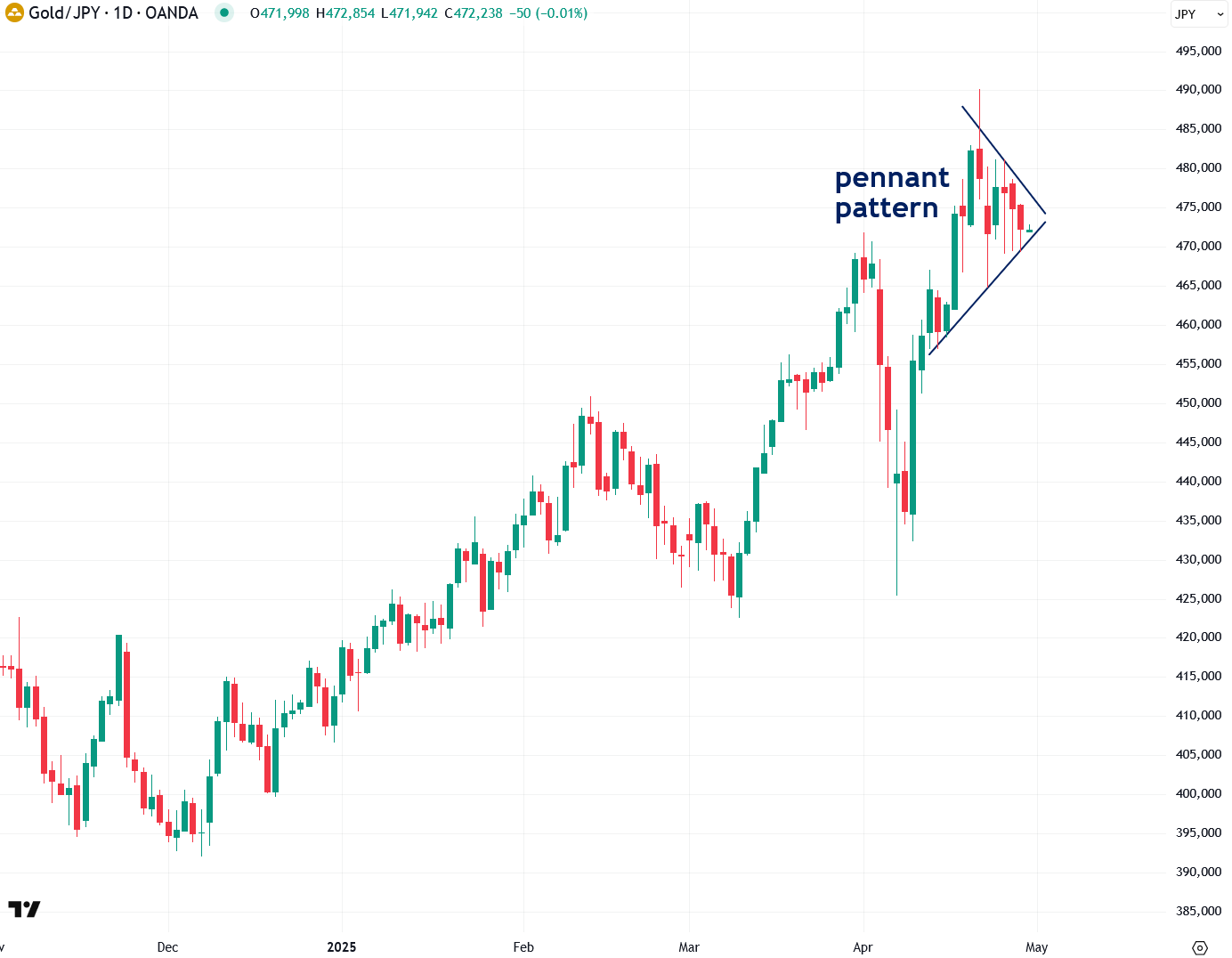
Intermarket analysis builds on traditional technical analysis by examining key correlations—both positive and inverse—between different asset classes, using the behavior of one market to help forecast movements in another. A clear example from this article is the idea that a bearish move in the U.S. dollar would likely be bullish for gold and other commodities.
If you’d like to learn more about intermarket technical analysis, I highly recommend the book Intermarket Analysis by John Murphy—it’s a classic in the field. I also recently bought the book Intermarket Analysis and Investing by Michael E.S. Gayed, which I’ve heard great things about and plan to read soon.
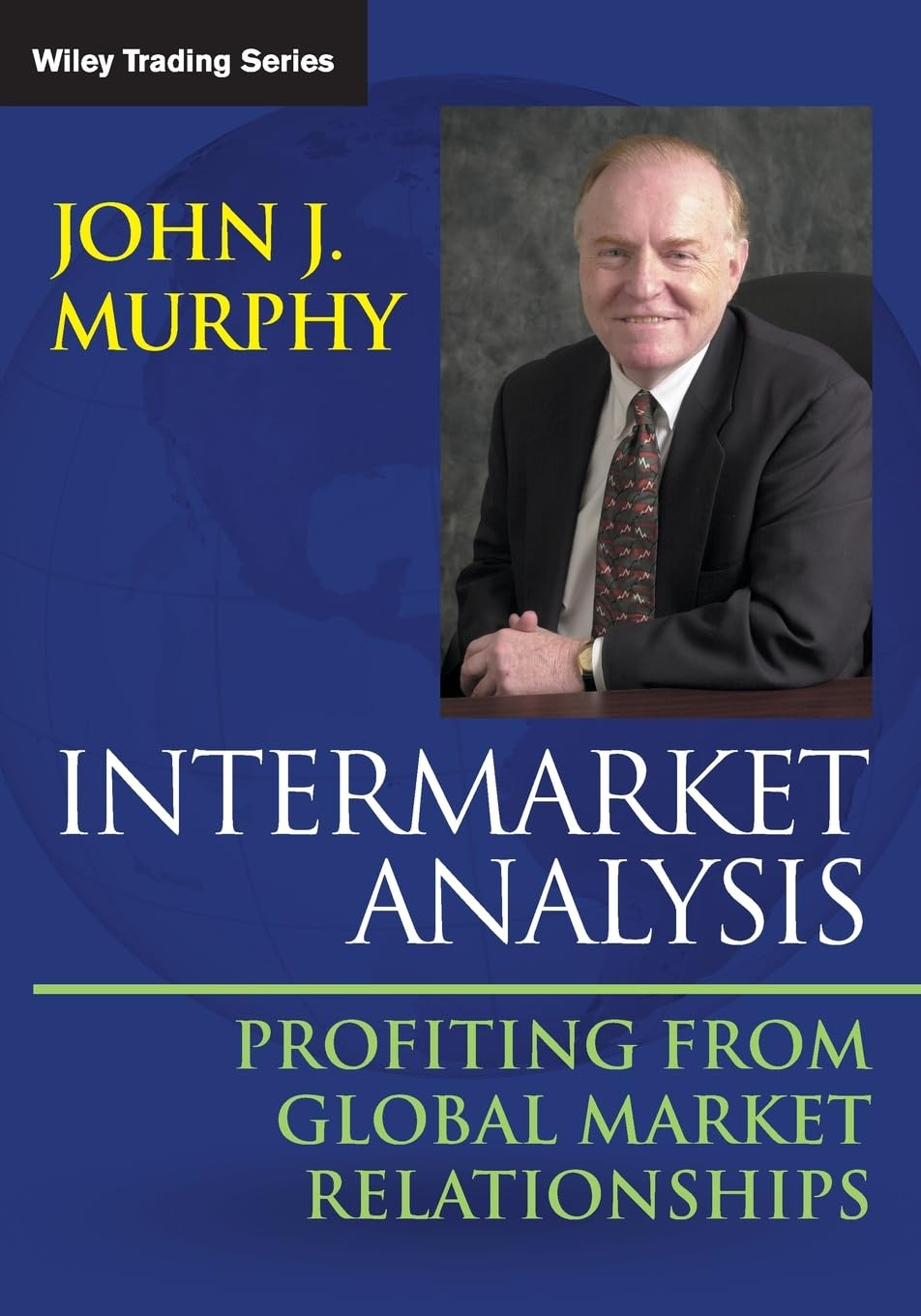
I believe a major catalyst—perhaps this Wednesday’s U.S. Personal Consumption Expenditures (PCE) report, Friday’s non-farm payrolls, or a major development on the tariff front—will soon trigger the breakout. One way or another, a big move is coming in both the dollar and precious metals. I’ll continue to keep you updated.
If you’ve enjoyed this report or have any questions, comments, or thoughts, please give this post a like and share your thoughts in the comments below—I’d love to start a dialogue and hear your perspective.
If you found this report valuable, click here to subscribe to The Bubble Bubble Report for more content like it.






